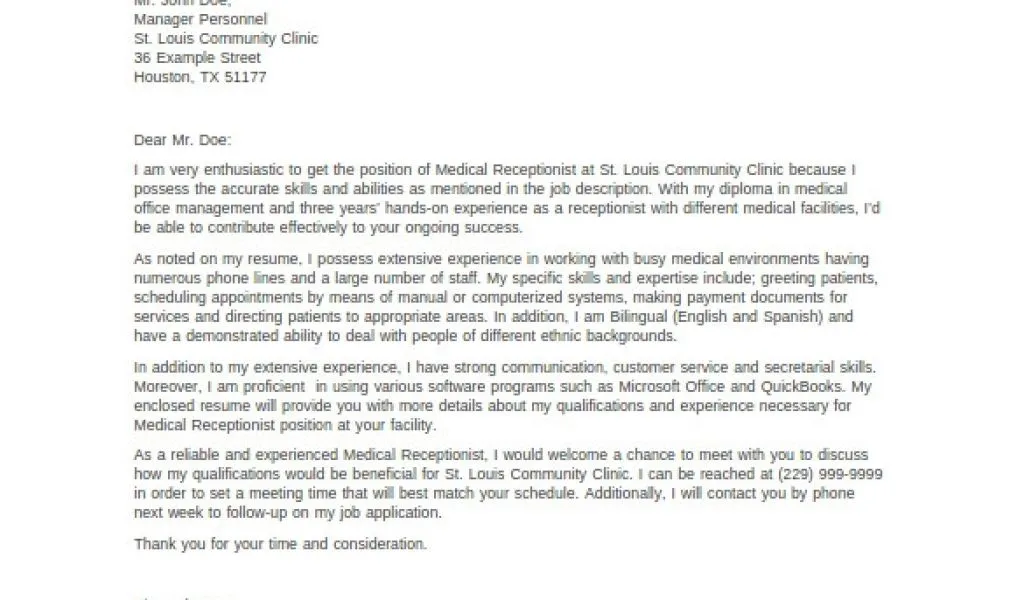Why Medical Receptionist Cover Letters Are Essential
A cover letter is your initial introduction to a potential employer, and for a medical receptionist, it’s a critical tool. It goes beyond simply listing your qualifications, it provides an opportunity to showcase your personality, express your genuine interest in the position and demonstrate how your unique skills and experience align with the specific needs of the clinic or practice. This is your first chance to impress the hiring manager and make them want to learn more about you. A well-crafted cover letter significantly increases your chances of landing an interview.
Highlighting Relevant Skills and Experience
Medical receptionist roles demand a specific skill set. Your cover letter should directly address the skills and experience that are most relevant to the job description. This is not a time for generic statements; instead, tailor your letter to the specific requirements outlined in the job posting. For example, if the posting emphasizes experience with electronic health records (EHR) systems, make sure to mention your proficiency in those systems. Providing concrete examples of how you’ve successfully used your skills is even more effective.
Key Skills to Showcase
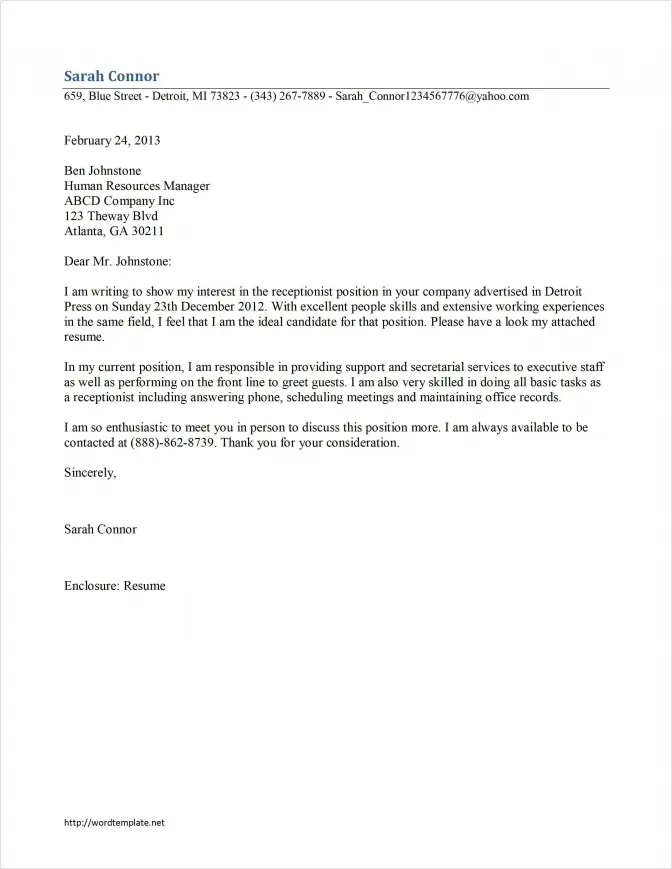
As a medical receptionist, you act as the face of the practice. Your cover letter should highlight the most important skills the role requires. Focus on both communication and interpersonal abilities, as well as administrative and technical skills. Emphasizing these key skills will help you stand out to potential employers. Make sure to demonstrate how your skills translate into the ability to excel in this role. Give the hiring manager confidence in your abilities.
Communication and Interpersonal Abilities
Excellent communication skills are a cornerstone of a medical receptionist’s role. Highlight your ability to communicate clearly and empathetically with patients, doctors, and other staff members. This includes active listening, a friendly demeanor, and the ability to manage difficult conversations with grace and professionalism. Furthermore, demonstrate your ability to handle patient inquiries, provide information accurately, and resolve issues efficiently, always prioritizing patient well-being.
Administrative and Technical Skills
Administrative and technical skills are equally important. Focus on your experience with scheduling appointments, managing medical records, handling insurance verification, and processing payments. Any experience with electronic health record (EHR) systems, medical billing software, and other relevant technologies should be highlighted. Furthermore, showcase your organizational skills, attention to detail, and ability to maintain confidentiality in a healthcare setting. Demonstrate a comprehensive understanding of administrative tasks.
Formatting Your Medical Receptionist Cover Letter
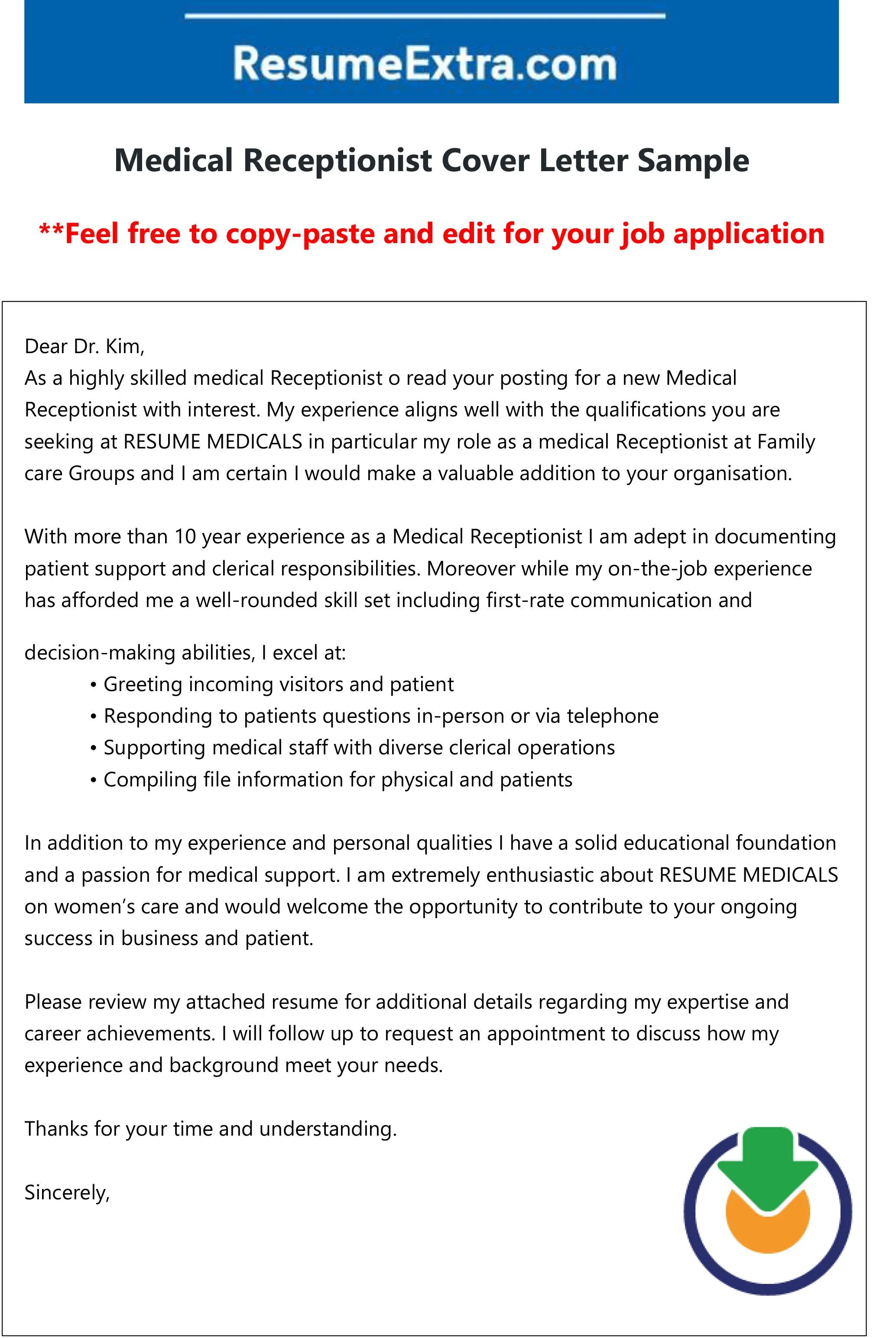
A well-formatted cover letter reflects professionalism and attention to detail. Use a clean and easy-to-read font, like Arial or Times New Roman, with a font size between 11 and 12 points. The layout should be organized, with clear sections and ample white space. Maintain a consistent margin throughout the document. A professionally formatted cover letter makes your application stand out and reflects positively on your attention to detail.
Contact Information and Date
Start with your contact information at the top of the letter, including your name, phone number, email address, and optionally, your LinkedIn profile URL. Below your contact information, include the date. Then, on a new line, add the hiring manager’s name and title (if known), and the clinic or practice’s name and address. Be certain to format the date correctly and include all the required information to increase your credibility.
Professional Salutation
Use a professional salutation, such as “Dear Mr./Ms. [Last Name]” if you know the hiring manager’s name. If you don’t, use “Dear Hiring Manager” or “Dear [Clinic/Practice Name] Hiring Team.” Avoid generic greetings such as “To Whom It May Concern,” as they suggest you haven’t taken the time to personalize your application. Addressing the letter properly, shows that you’ve taken the time to research the potential employer.
Writing the Body of Your Cover Letter
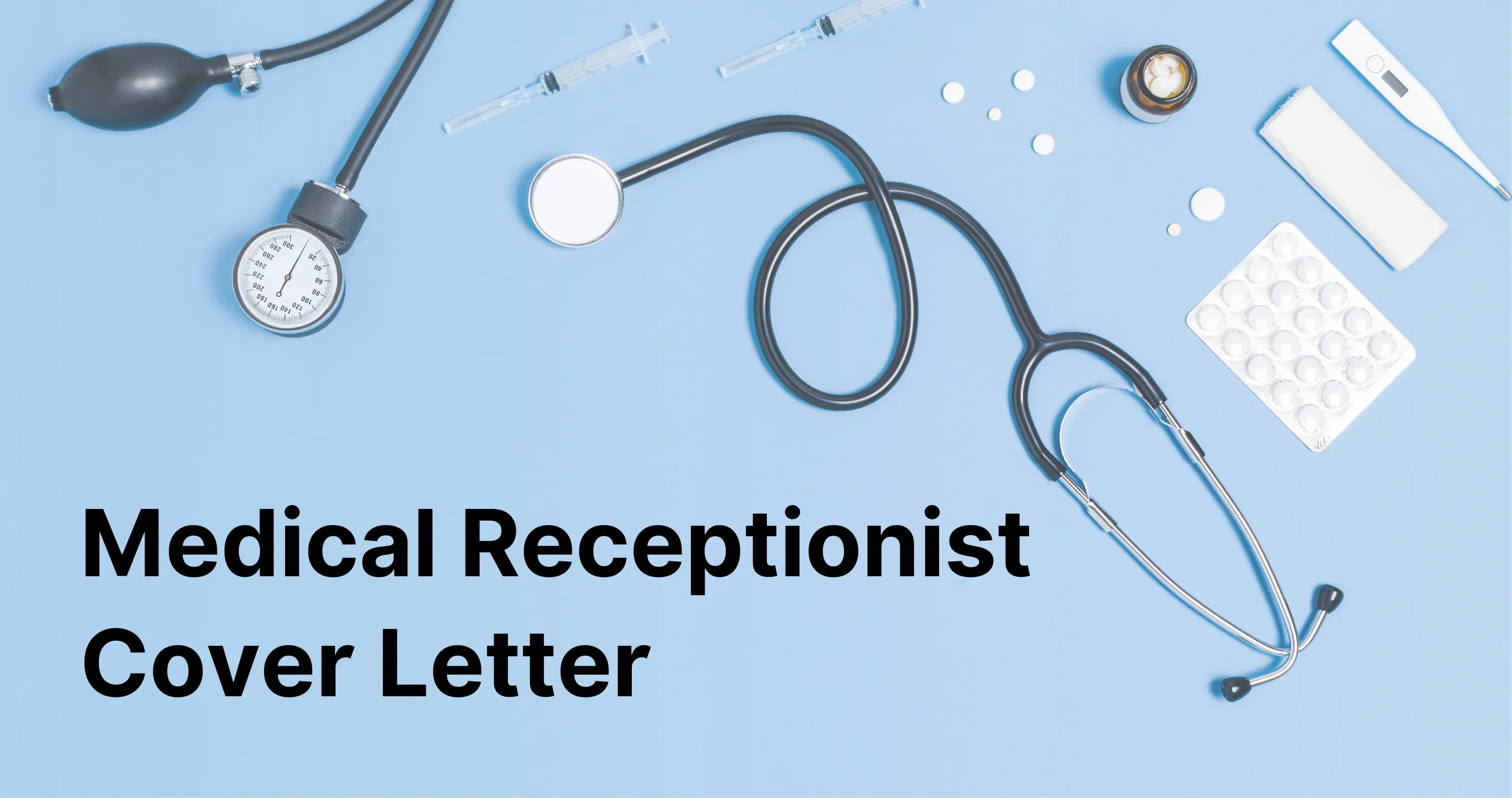
The body of your cover letter is where you sell yourself. It should consist of three to four paragraphs, each serving a specific purpose. This section is crucial, and each paragraph should focus on a specific part of your professional career, and express your interest in the available position. Make sure to format the body of the letter clearly, and take the time to carefully proofread each sentence. This will help you create a good impression on the potential employer.
First Paragraph Grab Attention
Your first paragraph is your hook. It should immediately capture the reader’s attention and express your enthusiasm for the position. State the specific job you’re applying for, where you saw the job posting, and why you are interested in the clinic or practice. Briefly highlight your most relevant skill or experience to create an immediate positive impression and set the tone for the rest of your letter. The first paragraph will help you get your foot in the door.
Second Paragraph Show Value
The second paragraph should showcase your value to the employer. Explain how your skills and experience align with the job requirements, providing specific examples of your accomplishments. Use action verbs to describe your responsibilities and achievements. For instance, instead of saying “Managed patient appointments,” you could say “Efficiently scheduled and managed over 50 patient appointments per day using [EHR system], reducing wait times by 15%.” Use each paragraph to give a brief and accurate description of your professional experience.
Third Paragraph Call to Action
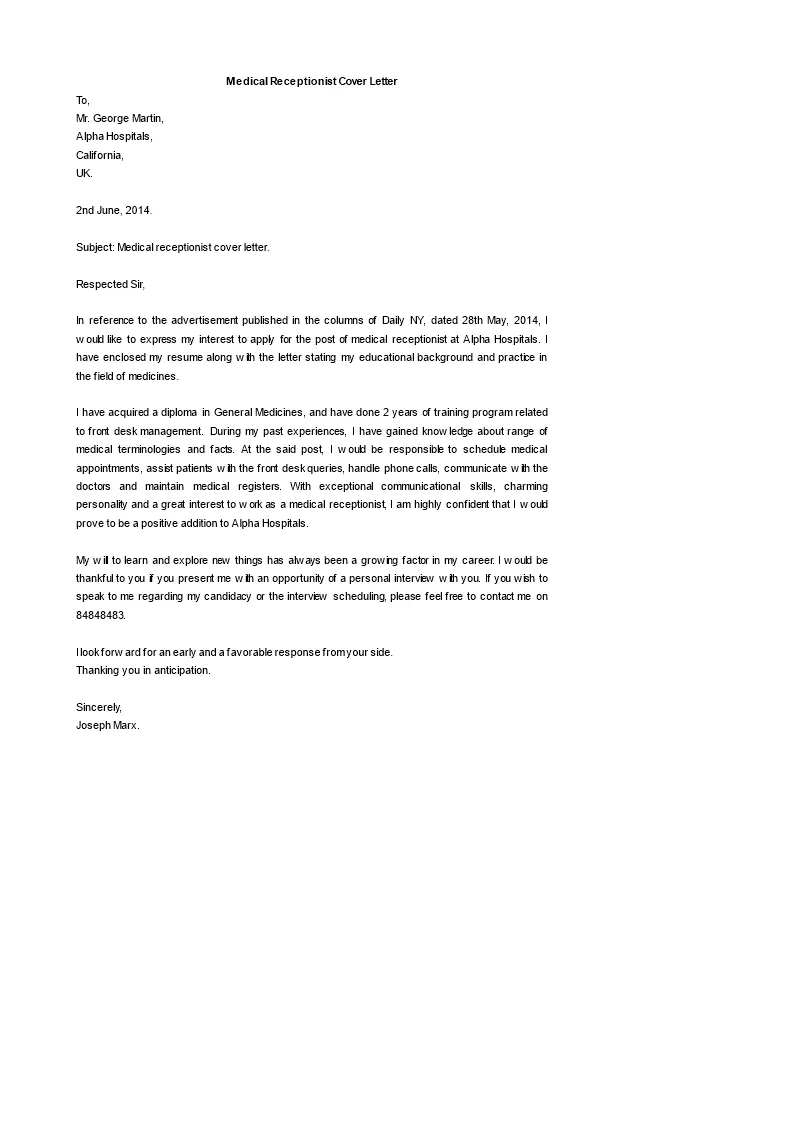
Your third paragraph should reiterate your interest and make a call to action. Summarize your key qualifications, express your enthusiasm for the opportunity, and state that you are eager to discuss your application further. Thank the reader for their time and consideration, and indicate how you will follow up (e.g., “I will follow up with you within a week”). End with a professional closing such as “Sincerely” or “Best regards,” followed by your name.
Reviewing and Proofreading Your Cover Letter
Before submitting your cover letter, review and proofread it meticulously. Errors in grammar or spelling, or other common mistakes, can undermine your chances of landing an interview. Ask a friend, family member, or career counselor to review your letter. Ensure that the language is clear, concise, and professional, and that it effectively communicates your qualifications and interest in the position. Proofreading your letter can only boost your chances.
Common Mistakes to Avoid
Several common mistakes can damage your chances of getting hired. It’s essential to avoid these mistakes to make a positive impression. Paying close attention to detail will help you avoid the pitfalls and increase your chances of success. Correcting these mistakes can improve your cover letter and lead to better opportunities.
Grammar and Spelling Errors
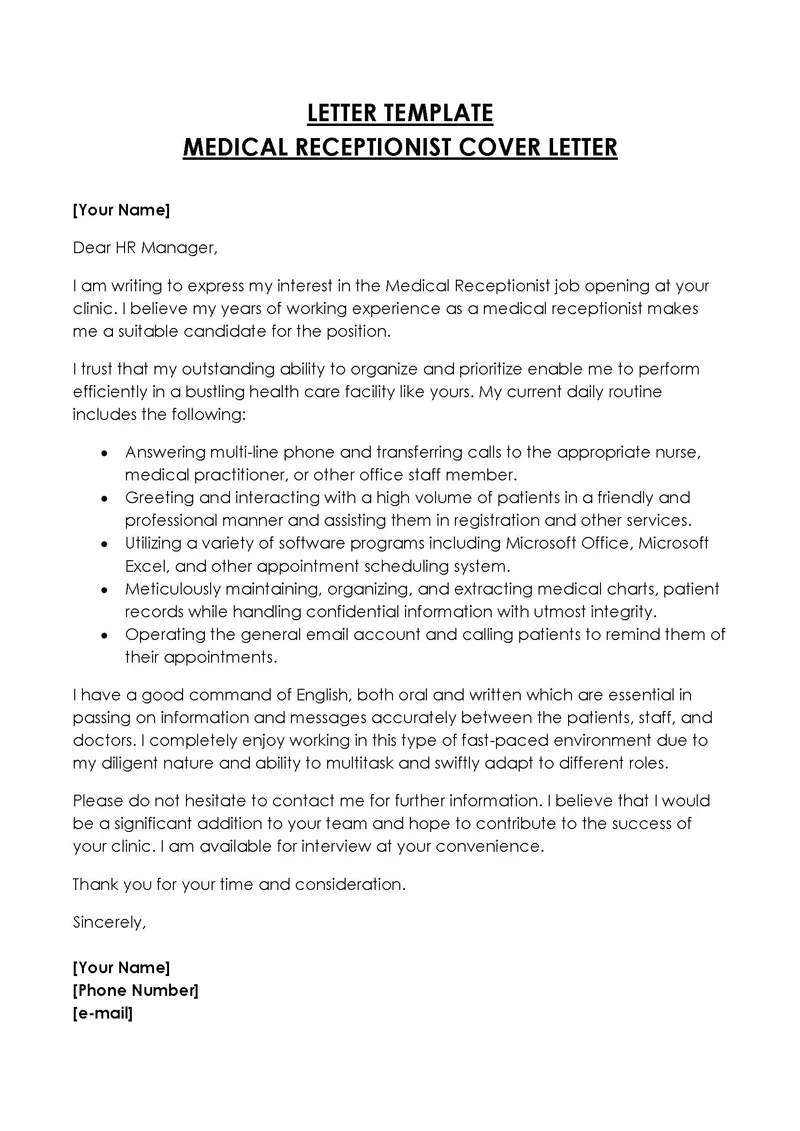
Grammatical and spelling errors can make you look unprofessional and careless. Always proofread your cover letter carefully, using grammar and spell-checking tools. Double-check for typos, incorrect punctuation, and awkward sentence structures. Ensure that your letter is free of errors before submitting it. Taking the time to proofread your cover letter will give you confidence in your application.
Generic or Unfocused Content
Avoid using a generic cover letter that could be sent to any employer. Tailor your letter to the specific job and the clinic or practice. Highlight the skills and experience that align with the job description. Show genuine interest in the organization, and provide specific reasons why you want to work there. A customized cover letter will demonstrate that you have invested time and effort in your application.
Tailoring Your Cover Letter
A generic cover letter is unlikely to impress employers. Tailoring your letter to each specific job application and clinic or practice is essential. This demonstrates that you’ve taken the time to understand the role and organization and that you genuinely want to work there. Tailoring your letter will substantially increase your chances of landing an interview and getting hired. Do everything you can to give your cover letter an advantage.
Researching the Clinic or Practice
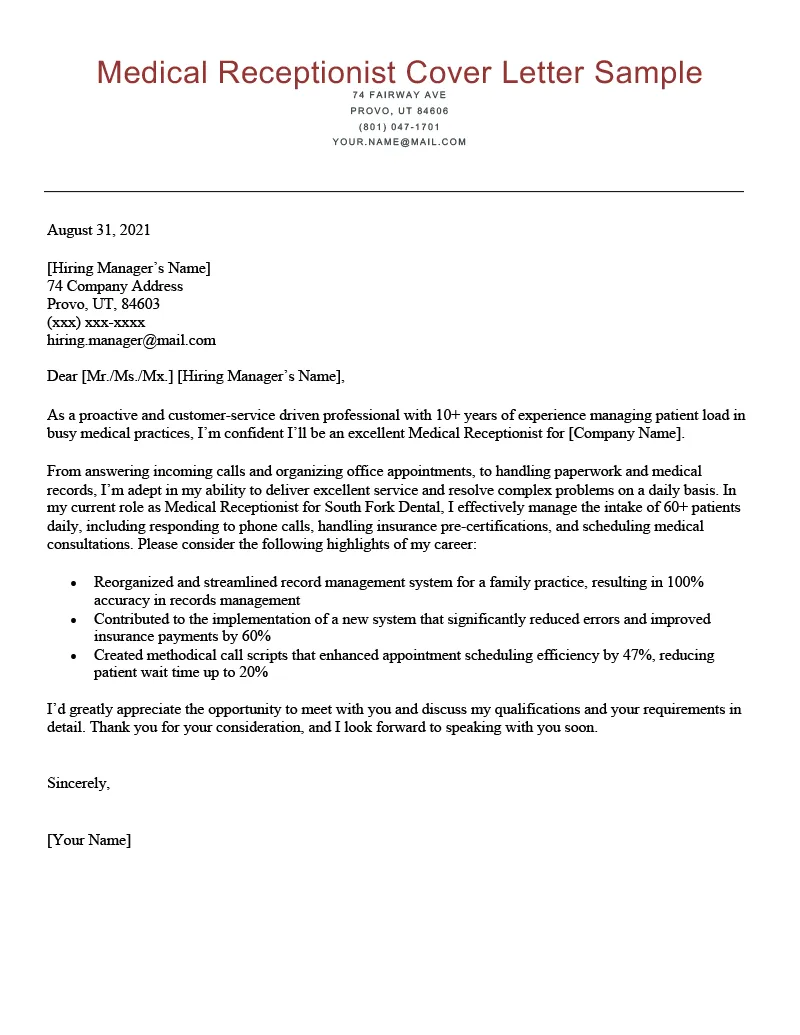
Before you start writing your cover letter, research the clinic or practice. Visit their website, read reviews, and look at their social media profiles. Learn about their mission, values, services, and any recent news or initiatives. This information will help you customize your letter to demonstrate your understanding of their needs and your interest in their organization. Make an impression by showing you’ve done your homework.
Customizing for the Job
Carefully review the job description and identify the key requirements and desired skills. Tailor your cover letter to address these requirements, highlighting your relevant experience and accomplishments. Use keywords from the job description throughout your letter. Provide specific examples that demonstrate your ability to meet the employer’s needs. Customize your letter to show that you are a perfect match for the position.
Sample Cover Letter Examples
Reviewing cover letter examples can help you understand how to structure your letter, highlight your skills, and present yourself professionally. Several examples can be found online. These examples provide a helpful framework to help you create a customized cover letter. Customize the cover letters with your own skills and experience.
Example 1 Highlighting Experience
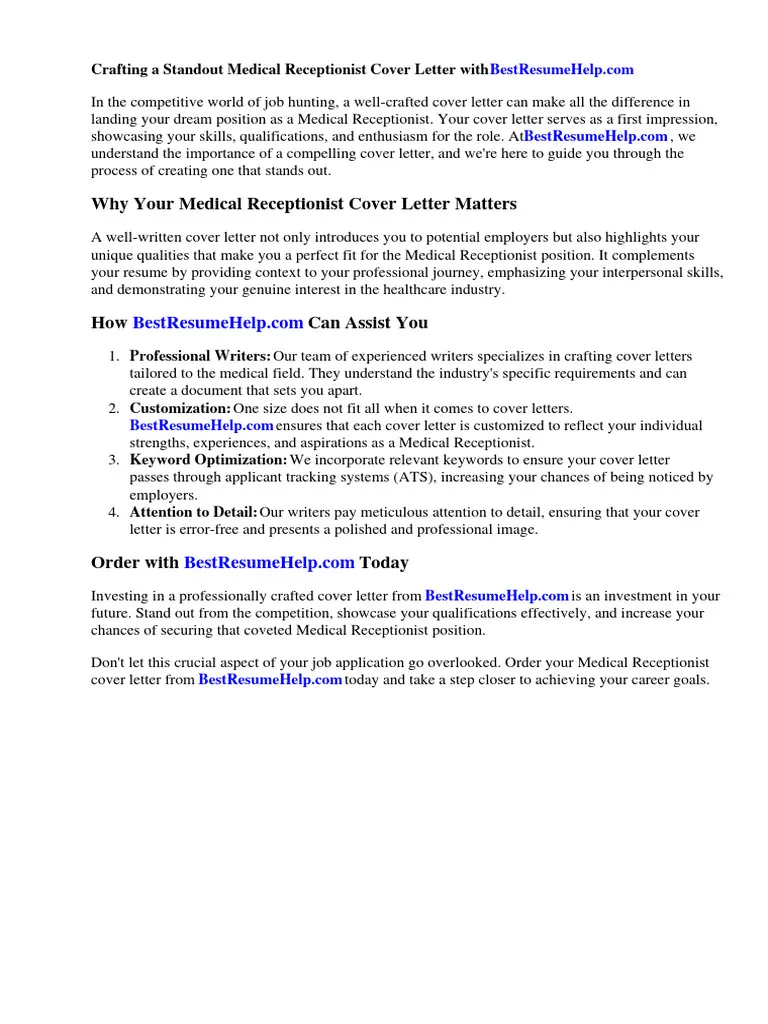
This example focuses on showcasing your experience, especially if you have a long track record of success in medical reception. The letter should highlight your accomplishments, quantify your results whenever possible (e.g., “Improved patient satisfaction scores by 20%”), and focus on specific examples of how you have demonstrated success in previous roles. Use all the tools at your disposal to get an advantage in the hiring process.
Example 2 Focusing on Skills
This example should emphasize your key skills and how they align with the job requirements. List your relevant skills with brief explanations of how you have used them in the past. Include skills such as communication, organization, and technical skills. Highlight specific software or systems you know how to use. Tailor the examples to showcase your most relevant experience. Customize the cover letter to showcase your skills.
Example 3 Addressing Career Change
If you’re changing careers, this example is for you. It should explain why you are making a career change and how your transferable skills are relevant to the medical receptionist role. Highlight any related experience or training you have, and focus on the value you can bring to the clinic or practice. Be clear about why you are making this shift and emphasize your value to the employer. Be open to any additional questions the employer might have.
Finalizing and Submitting Your Cover Letter
Once your cover letter is written, formatted, and proofread, it’s time to finalize it and prepare it for submission. Pay attention to the format required by the employer, whether online or by mail. Ensure that you have all the necessary information and attachments before you submit your application. Double-check everything one last time to be sure you’ve covered all your bases.
Choosing the Right Format
Choose the appropriate format for your cover letter and resume. If you are submitting your application online, save your documents in a common format such as PDF, unless the employer requests a specific format. If submitting by mail, print your documents on high-quality paper and ensure they are neatly presented. Formatting your application correctly will make a positive impression.
Submitting Online or by Mail
Follow the employer’s instructions carefully when submitting your application. If applying online, make sure you submit your cover letter and resume through the proper channels and attach the correct documents. If applying by mail, ensure that your documents are well-presented and sent to the correct address. Confirm that your submission has been received if possible. Following directions is an important part of your application.
